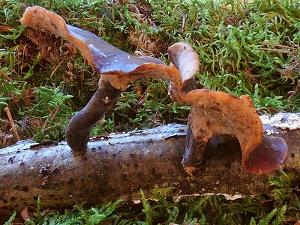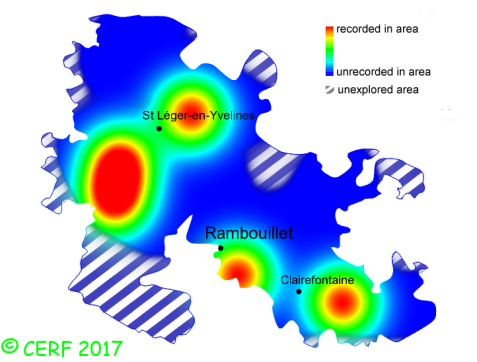| Polyporus badius (Pers.) Schwein. |
|
|
|
|
|
|
The cap is chestnut to ochre-brown, darker towards centre, thin (less than 8mm thick), tough, convex-flat then shallowly funnel-shaped. The cap surface is viscid in wet weather, drying smooth and shiny. The cap margin is wavy-lobed, acute and thin. The stem is off-centred or central, blackish brown, velvety, black and tapering towards the base. The flesh is white; its taste is mild to bitter; the odour is faint, mushroomy; The tubes are decurrent, short (less than an inch), white at first, then cream. The pores are white then buff, very narrow (4 to 8 per mm), round to angular. The spore print is white. It grows in woods, on dead or living wood (essentially beech, willow, poplar, ash), rarely on conifers. The fruiting period takes place from April to December.
Chemical tests : none. Distinctive features : Chestnut brown cap, smooth and shiny; black stem base; tough flesh; large size Polyporus badius is quite rare and localised in the forest of Rambouillet, and is occasional, more generally speaking . | ||
|
page updated on 14/01/18

